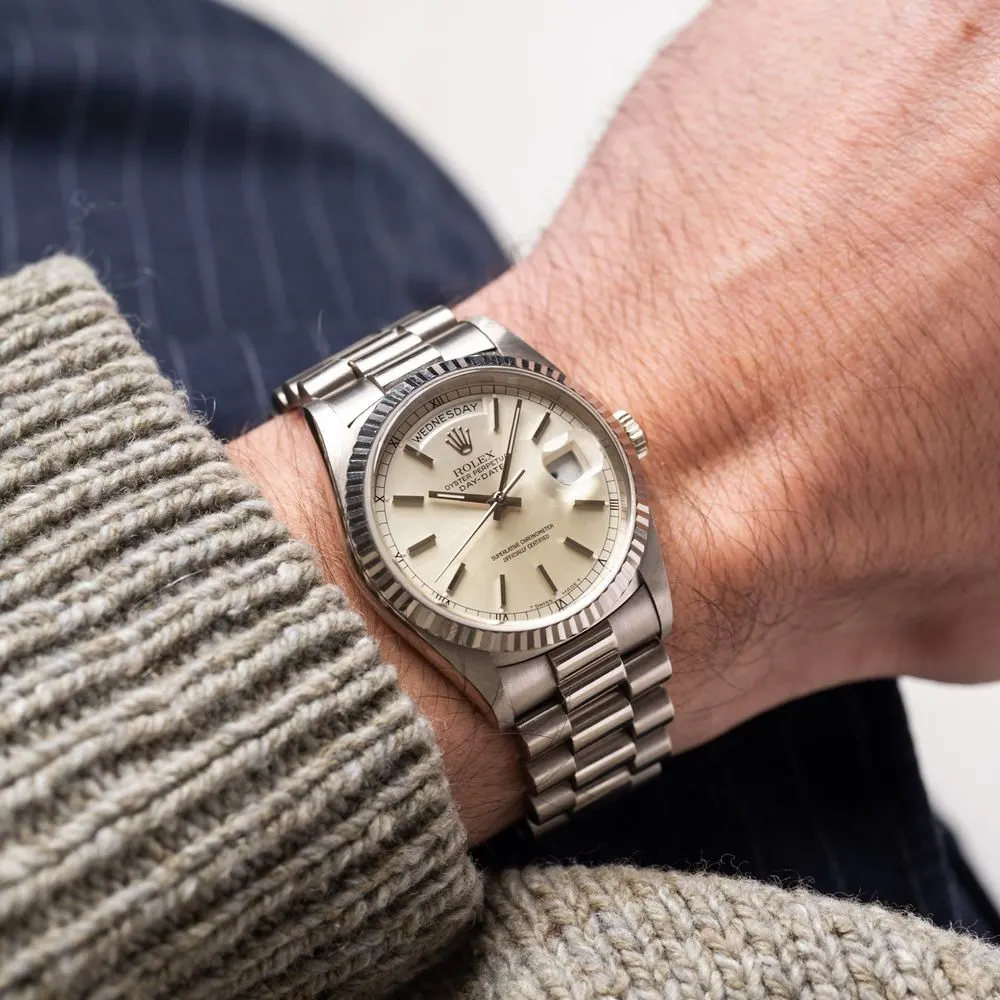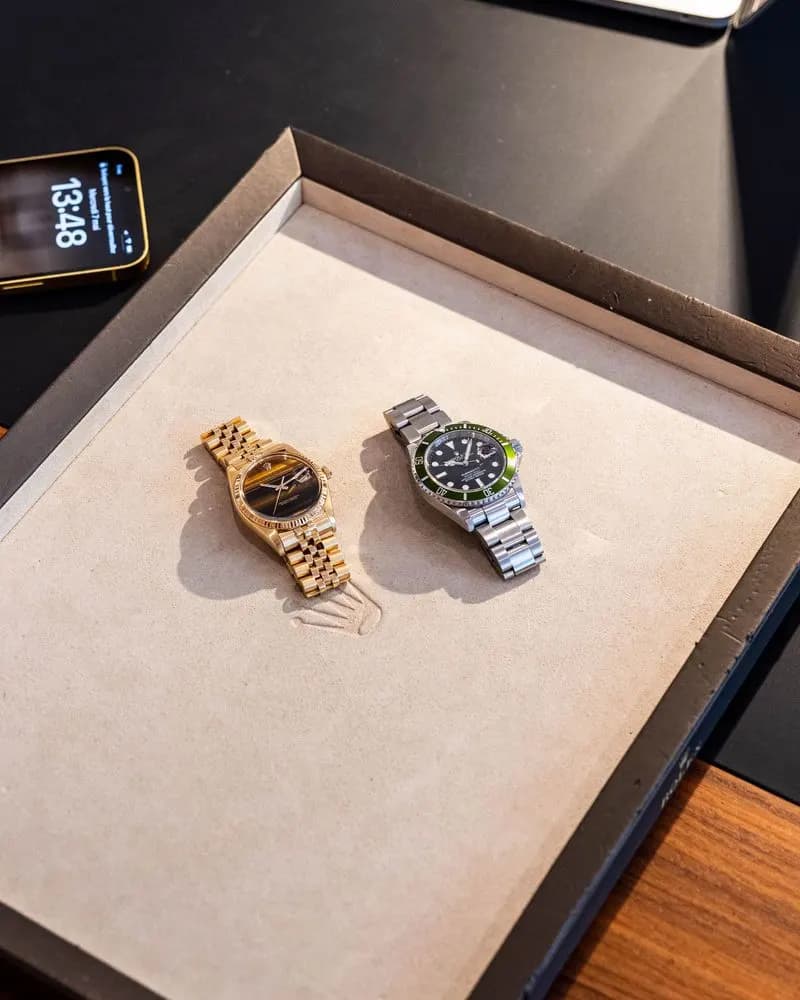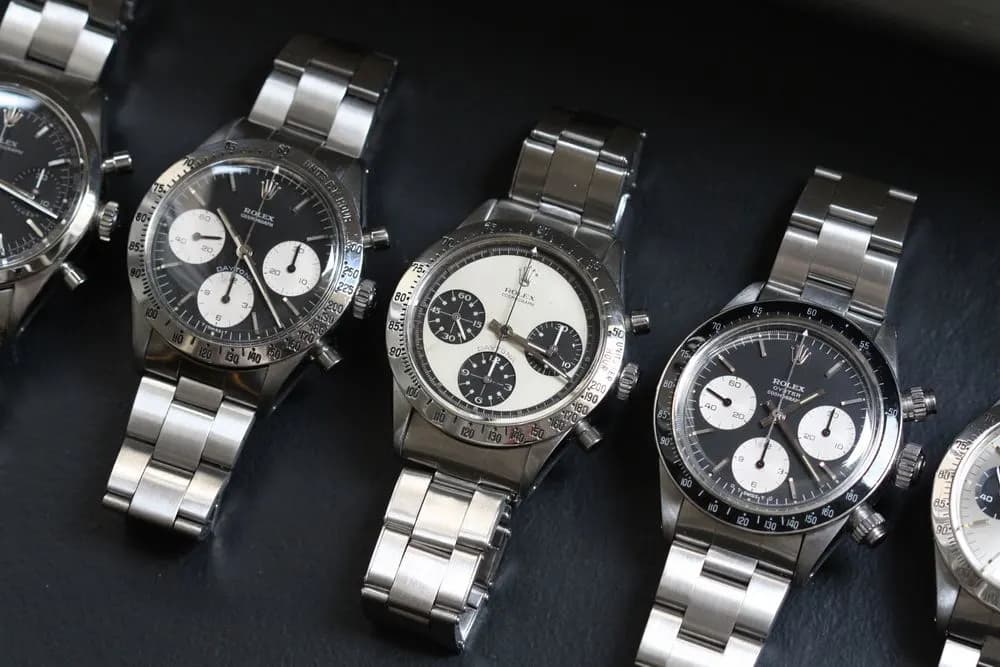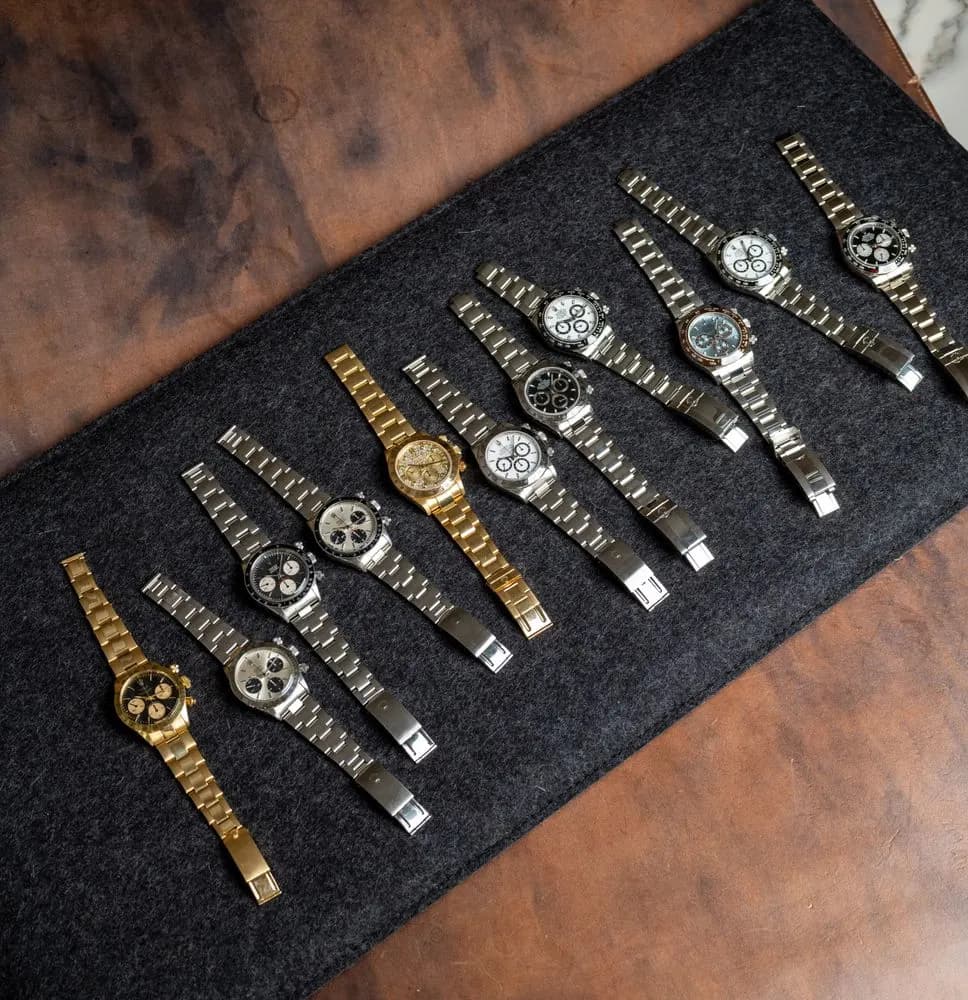Before discussing this exceptional piece, let's talk a bit about this mythical model that has stood the test of time (or rather "soared through time," as this reference can be deemed an iconic watch): the Rolex GMT Master.
Virtually every evolution of this watch has marked its era and entered the pantheon of collectors. Each of us, whether casual or seasoned collectors, has been drawn to one or more of these models at some point. Who hasn’t heard of a 1675 “Gilt-Dial,” a 6542 “Pussy Galore,” a 1675 “Cornino,” a 16760 “Fat Lady,” a 16750 “transition,” or a 1675 “Long E”… And it is the latter we present to you today, in a perfect configuration that makes it a true collector’s item.

Collecting a vintage Rolex today means owning a perfect, or nearly perfect, watch. But what does that mean?
It simply means that whatever reference you own, it must remain intact, faithful to its year of production, and, if possible, feature components with certain characteristics that make it rare. Take the example of the first GMT-Master, introduced in 1954 under reference 6542. A very, very rare model despite a number of pieces still being offered online. But today, the number of these worth wearing or keeping in a safe is minimal. The reason lies in their fragility. Loaded with radium in the early versions (1954 to… theoretically 1963), the lifespan of certain materials exposed to radium's radioactivity was quite ephemeral. Among these parts, the most significant are the dial, the hands, and the famous Bakelite bezel (the most heavily loaded with luminescent material). Radium tends to yellow and crack Bakelite and literally corrodes everything around it, so very few GMT-Masters have managed to preserve their bezel and dials in decent condition. As a result, a high percentage of this model today is equipped with replacement parts.
This is just one example. The “lacquered dial” models (1954 to about 1966) have also suffered unfortunate fates. While some dials have beautifully developed a “tropical” patina, many were heavily damaged by significant oxidation of the varnish, leading to its cracking, and were replaced by the manufacturer. And a replacement of original parts leads to a more or less significant drop in the watch's value, with “more” being the right descriptor.
Thus, when a watch has managed to retain its integrity thirty or forty years after its production year, we can then talk about an iconic piece. And that is what we present to you here today, an iconic watch, whose rarity lies in four aspects:
The Insert
The first thing one notices about this watch is the incredible color of its bezel, or more precisely, its insert. These bezels were produced in the late 1960s and are part of a batch where the red ink was mixed with a yellow that was not very UV-resistant. As a result, the magenta, being of better quality, has withstood time better. This small production of inserts (the majority of which were replaced during Rolex servicing) adds significant value to this watch as a collector’s piece.
There are two types of fuchsia inserts seen on this reference. The first, found on watches dating to around 1968, features a first-generation insert distinguished by a slightly wider 12H triangle than the second generation, with a slightly rounded upper part. The second generation, typically seen on the last 1675 productions equipped with the famous MK1, MK1.5, and MK2 dials, is often observed on watches dating from the early 1970s, between 1970 and 1973. This insert is characterized by a GMT triangle at 12H with a sharp top and numbers closer to the dial than its predecessor.
Note: this information is based on observation and is by no means an exact science, as Rolex, at that time, frequently used its stock of service and surplus parts for later-produced watches. Nevertheless, it is important for enthusiasts to have access to this information, if only to address many questions on the subject and clarify some of the confusion stemming from online articles.

The Dial
In 1969, the correct dial for this watch is the “MK1” or “Long E.” “Long E” because the “E” in Rolex features three horizontal bars of identical length. But that’s not all; the present dial is in exceptional original condition and has retained perfectly white, thick ink, exceptional texture, and immaculate indexes that still exhibit the “tapestry” effect characteristic of certain dial productions.

The Case
In 52 years of existence, a watch has usually undergone a number of polishes. Natural polishing from wear and tear for many, and mechanical polishing during service by the brand or independent watchmakers. The present watch features a “Thin Case” in perfect condition, including chamfers with precise angles. A “must,” you might say, but so rare...


The Hands
To crown it all, the watch presents an original, homogeneous set of hands in a state of… perfection.

These four factors alone make this an exceptional watch. And when comparing the quantity of GMT-Masters available on the market today, a brief comparison places this one at the very top, “very much at the top.” It was with undisguised pleasure that we appreciated this “pearl” in our showroom. Unfortunately for us, we enjoyed it only briefly, as it quickly found a buyer passionate about exceptional watches.













